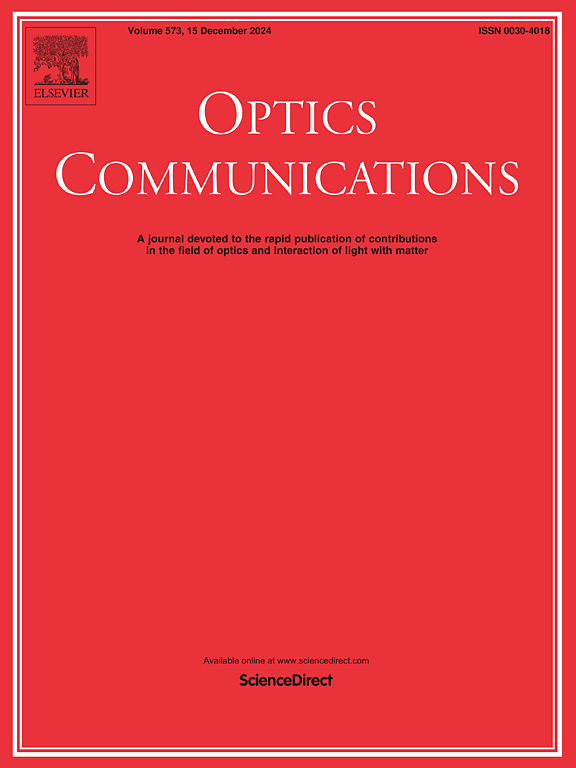Optimized RbPbI3-Based perovskite solar cells with SnS2 ETL and MoO3 HTL achieving simulated PCE of 32.72%
IF 2.2
3区 物理与天体物理
Q2 OPTICS
引用次数: 0
Abstract
The pursuit of alternative absorber materials with higher structural and thermal stability has been fueled by the growing demand for high-efficiency and stable perovskite solar cells (PSCs). Using its improved durability and optoelectronic qualities, this work investigates RbPbI3 as a possible substitute for conventional perovskites. Using SCAPS-1D to model an Ag/FTO/ETL/RbPbI3/Ni device structure, a power conversion efficiency (PCE) of 28.12 % was first obtained with SnS2 ETL (electron transport layer). Then, hole transport layer (HTL) concept has been used to improve the performances more. The thickness, defect density, and doping concentration of ETL and HTL, and absorber were all methodically optimized to improve performance. This led to a markedly improved VOC of 1.22 V, PCE of 32.72 %, JSC of 32.21 mA/cm2, and FF of 83.27 % with MoO3 HTL. The new results demonstrate that RbPbI3 is a suitable substitute for long-term solar energy applications due to its improved stability, improved charge transport through SnS2 and MoO3, and decreased recombination losses. This research will have an impact on the development of high-performance, stable, and eco-friendly photovoltaic technologies in the future by directing the experimental validation and manufacture of RbPbI3-based PSCs.
求助全文
约1分钟内获得全文
求助全文
来源期刊

Optics Communications
物理-光学
CiteScore
5.10
自引率
8.30%
发文量
681
审稿时长
38 days
期刊介绍:
Optics Communications invites original and timely contributions containing new results in various fields of optics and photonics. The journal considers theoretical and experimental research in areas ranging from the fundamental properties of light to technological applications. Topics covered include classical and quantum optics, optical physics and light-matter interactions, lasers, imaging, guided-wave optics and optical information processing. Manuscripts should offer clear evidence of novelty and significance. Papers concentrating on mathematical and computational issues, with limited connection to optics, are not suitable for publication in the Journal. Similarly, small technical advances, or papers concerned only with engineering applications or issues of materials science fall outside the journal scope.
 求助内容:
求助内容: 应助结果提醒方式:
应助结果提醒方式:


